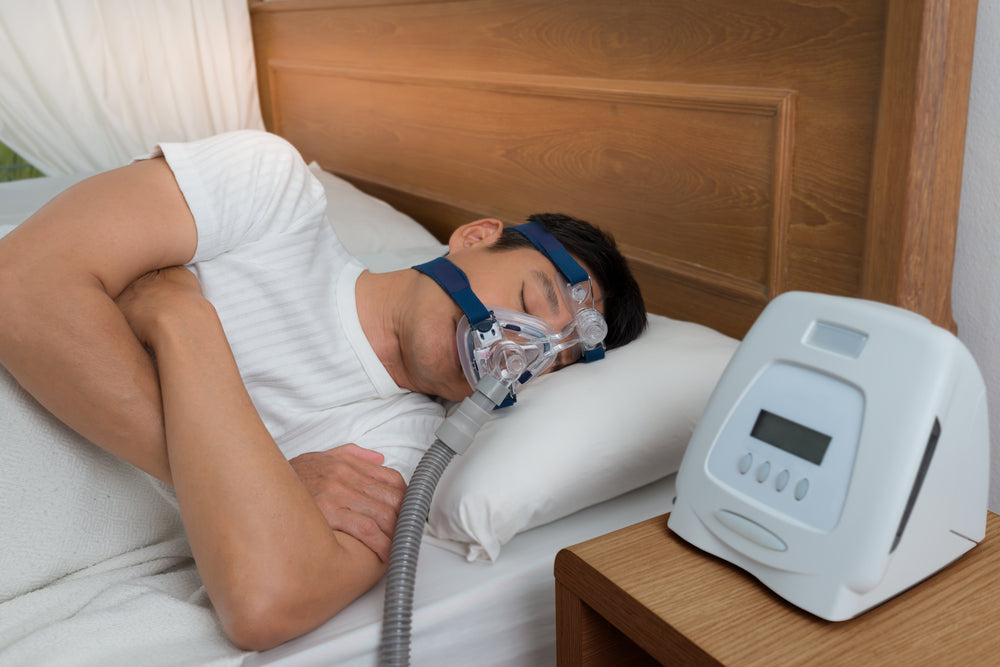It’s an undisputed fact that continuous positive airway pressure, or CPAP, therapy is the number one form of treatment for sleep apnea. A CPAP machine provides continuous pressured air through a hose and mask that keep obstructions from blocking the airways when you sleep, essentially “curing” the condition when under use. When your breathing becomes normal again, the body ceases to wake itself up, allowing for more restful, deep sleep throughout the night.
Your Pressure Settings
Restful sleep can only happen if your pressure settings are accurate and properly prescribed by a board-certified sleep physician. Your personalized pressure settings are based on a variety of factors from age, gender, and weight to things like sleep positions and environmental factors. Severity of sleep apnea alone does not determine the pressure settings on your CPAP machine.
Pressure settings on your CPAP machine can be a bit difficult to understand if you don’t do your research. Your CPAP pressure settings are measured in centimeters of water pressure, or cmH2O. Most CPAP machines are able to go as high as 25 cmH2O, but that is far too high for the average sleep apnea sufferer. While the average setting is 10 cmH2O, your setting will likely fall anywhere between 6 and 15 cmH2O. Again, your pressure settings are prescribed by your sleep physician based on the results of your sleep study as well as the type of machine you are recommended to use: a CPAP, BiPAP (BiLevel Positive Airway Pressure) or AutoPAP (Automatic Positive Airway Pressure).
How to Tell When Your Pressure Needs Adjustment
If you have a CPAP machine, you use one pressure setting prescribed by your doctor for the entire night. Your pressure should be just enough to keep your airways unobstructed for a full night of sleep. When your pressure is too low, you can experience more apnea events than the normal 5 per hour as well as other symptoms like snoring or waking up gasping for air. But, if the pressure is too high you can experience other side effects like uncomfortable therapy, problems with your CPAP mask, nasal congestion, and fitful, interrupted sleep.
BiPAP pressure settings deliver air at two different pressures: one for inhalation and another for exhalation. These different pressures help hold your airways open when you breathe in but produce a lower pressure so you can more comfortably breathe out. As such, if your physician prescribes a BiPAP machine, you should also get two different pressure settings. If these settings are too low or too high, you will experience the same symptoms as those with incorrect CPAP settings.
An AutoPAP machine is a bit different in that it automatically adjusts the pressure itself, changing to adapt to your breathing patterns as they change throughout the night. Some sleep apnea sufferers tend to experience increased breathing events at certain times of the night or during certain points during their sleep cycle. An AutoPAP machine takes these factors into account and vacillates between different pressures within a range prescribed by your doctor. Again, if the pressure range changes to be too low or too high for your condition, you’ll experience similar symptoms to those in the above two machine types. This auto-adjustment may lead to fewer pressure changes as its inherent adaptability makes it a less rigid type of sleep apnea treatment.
If you are ever concerned that your sleep apnea treatment settings are too low or two high for your condition, please consult your sleep physician before making any changes to the settings. Incorrect pressure settings can lead to worse sleep and less effective treatment, causing even more problems in the long run. Ensuring that your machine and specialized pressure settings are correct is an important step to managing your sleep apnea and experiencing the better quality of life that restful sleep can bring.

